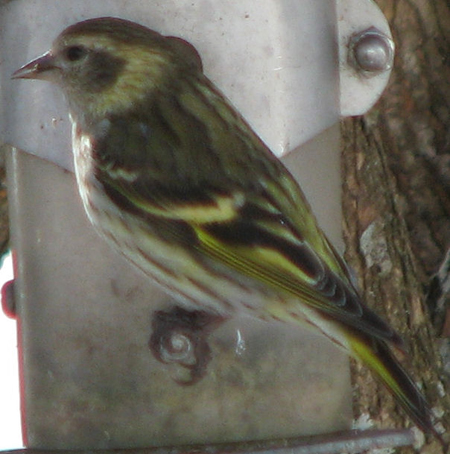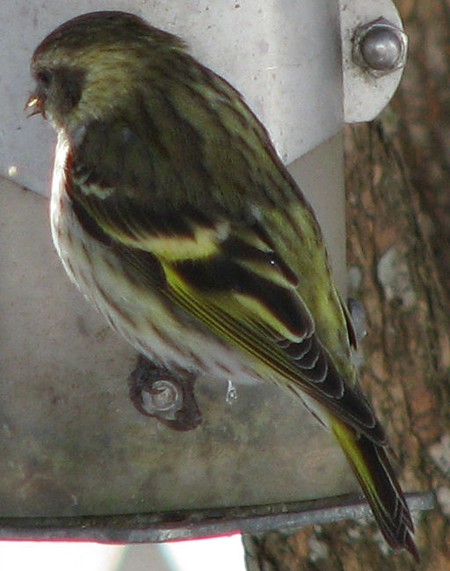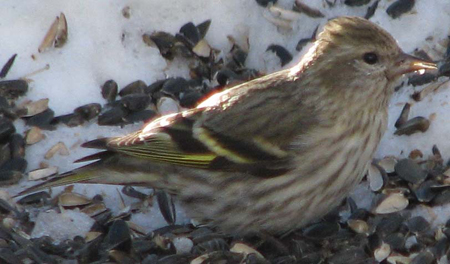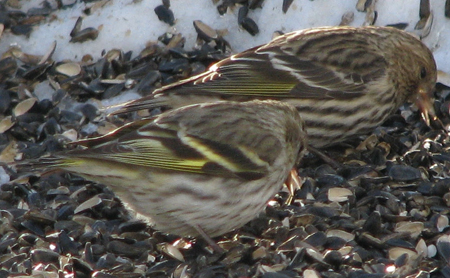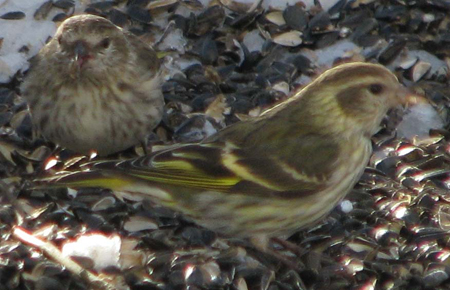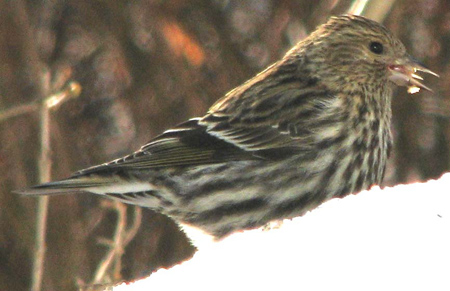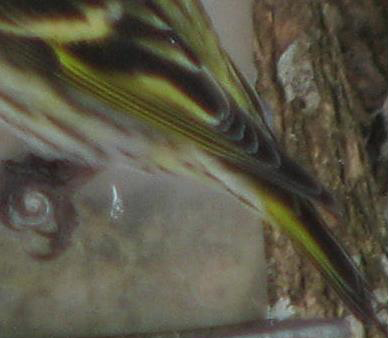While scanning the flocks for Pine Siskins at my feeder this winter (I also blogged about Siskins back in October), I spotted an oddly distinctive one. I studied it closely, wondering at first if it could be a Eurasian Siskin which would be an exceptional rarity. I took lots of photos and video of the bird (some of which you can see here), and then did some homework.
It turns out that I am not the first person to encounter this question. Years ago some people in Nova Scotia had a similar experience. They ended up writing an article about these aberrant birds which the authors termed "green-morph" Pine Siskins and how to tell them apart from the very similar looking female Eurasian Siskin. You can read the entire article here:
http://fog.ccsf.cc.ca.us/~jmorlan/siskin_scan.pdf
Based on museum specimens, the authors estimated that the green-morph birds occurred at a frequency of about one in a hundred. They found no evidence of the birds occurring more frequently in one geographic area versus another. But David Sibley, in his famous field guide, illustrates what is apparently a version of this same variant that he terms a "yellow" variant and notes "scarce; most frequent in southwest." I would love to know if that is indeed true but I haven't come across anything that documents that the variants are more frequent in one place or another.
Apparently the green-morph variant is caused by a deficiency in dark pigments which results in the individuals appearing pale and greenish and the yellow in the plumage is less masked so appears brighter and more extensive.
Quite a few observers have written about and posted photos of green-morph Pine Siskins and for those interested I have posted a library of links to these at the bottom of this entry, below the photos.
An interesting article entitled "The Occurrence of Green-morph Pine Siskins in the Siskin Irruption of 1989-1990" can be accessed here: http://elibrary.unm.edu/sora/NABB/v021n03/p0085-p0087.pdf
After finding this particularly striking siskin at my feeder, I have paid more attention and I have noted several other green-morph Pine Siskins, though most are much paler overall than the first bird which had very contrasting dark cheeks and cap. I have had at least one query as to why I didn't think this bird was a female Eurasian Siskin. Based on the article I mention above and some reference books, some of the characters to look for that indicate a variant Pine Siskin versus Eurasian Siskin are:
· Head and bill shape consistent with Pine Siskins
(thin, straight bill)
· Yellow in the undertail coverts
· Extensive yellow in tail and flight feathers
· Subdued streaking on flanks
This bird displays at least three of the four characters (it does have fairly dark and extensive flank streaking but normal Pine Siskins do as well) though the 2-3 other pale green-morph birds that I documented display all four characteristics including the subdued flank streaking.
So, it awaits the judgment of you the reader if you desire to make a call.
Below are more photos of the most striking individual as well as the other paler individuals as well as some "normal" Pine Siskins—all from my feeders in Maine. Even the "normal" Pine Siskins show some significant variation in the darkness of plumage.
Here are the bottom halves of a normal and green-morph Pine Siskin:

A library of photos and discussion about green-morph Pine Siskins below:
http://stokesbirdingblog.blogspot.com/2009/01/green-morph-pine-siskin.html
http://www.martinreid.com/Main%20website/siskin2.html
http://aviantendencies.blogspot.com/2009/01/real-green-morph-pine-siskin-i-think.html
http://pioneerbirding.blogspot.com/2009/02/third-green-morph-pine-siskin-0210.html
http://home.earthlink.net/~pomarine3/id8.html
http://www.flickr.com/photos/sa_young/sets/72157612564542509/
http://www.rarebird.org/forum/forum_posts.asp?TID=3703&PID=10703


